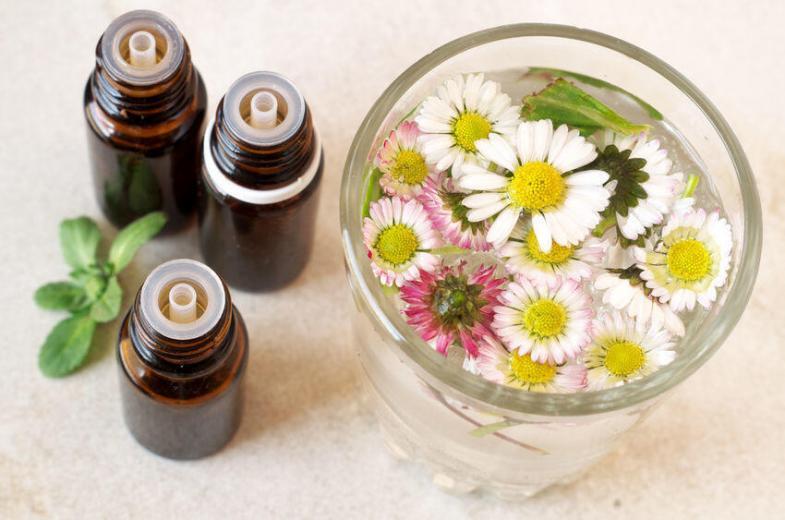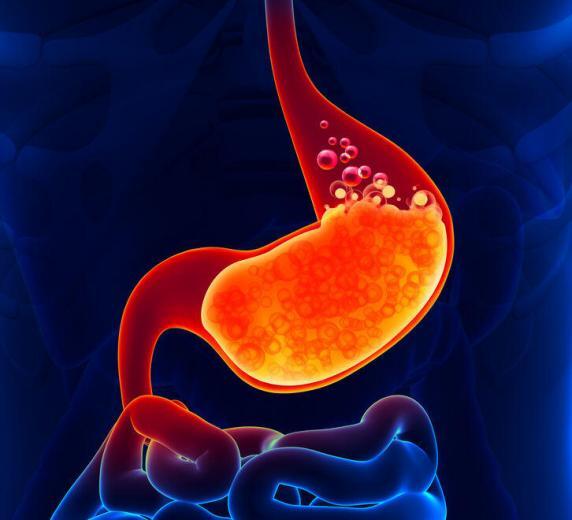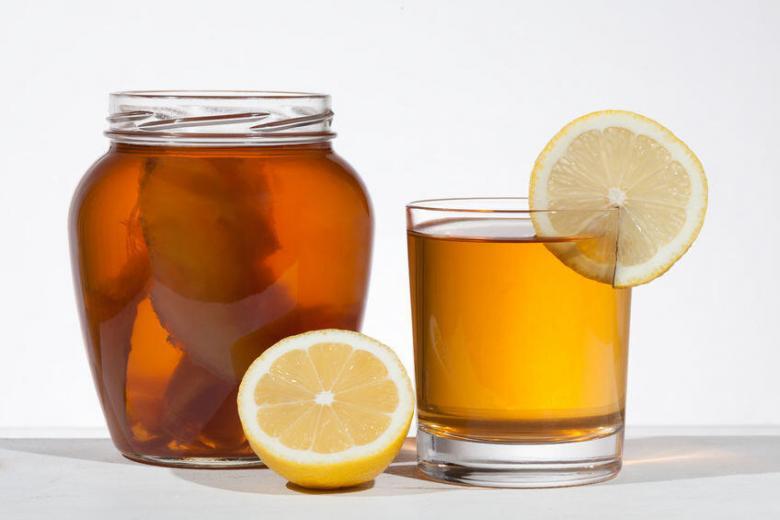What is SIBO?
 [et_pb_section bb_built=”1″ admin_label=”section” transparent_background=”off” allow_player_pause=”off” inner_shadow=”off” parallax=”off” parallax_method=”on” make_fullwidth=”off” use_custom_width=”off” width_unit=”off” custom_width_px=”1080px” custom_width_percent=”80{2576162dc87fac637fb05d96ed224a3a1f9916e34036ef411848967d76917bf7}” make_equal=”off” use_custom_gutter=”off” fullwidth=”off” specialty=”off” disabled=”off” prev_background_color=”#000000″ next_background_color=”#000000″][et_pb_row admin_label=”row” make_fullwidth=”off” use_custom_width=”off” width_unit=”off” custom_width_px=”1080px” custom_width_percent=”80{2576162dc87fac637fb05d96ed224a3a1f9916e34036ef411848967d76917bf7}” use_custom_gutter=”off” gutter_width=”3″ allow_player_pause=”off” parallax=”off” parallax_method=”on” make_equal=”off” parallax_1=”off” parallax_method_1=”on” parallax_2=”off” parallax_method_2=”on” parallax_3=”off” parallax_method_3=”on” parallax_4=”off” parallax_method_4=”on” disabled=”off” background_position=”top_left” background_repeat=”repeat” background_size=”initial”][et_pb_column type=”4_4″][et_pb_text use_border_color=”off” disabled=”off” module_alignment=”left” background_position=”top_left” background_repeat=”repeat” background_size=”initial” _builder_version=”3.2.1″]
[et_pb_section bb_built=”1″ admin_label=”section” transparent_background=”off” allow_player_pause=”off” inner_shadow=”off” parallax=”off” parallax_method=”on” make_fullwidth=”off” use_custom_width=”off” width_unit=”off” custom_width_px=”1080px” custom_width_percent=”80{2576162dc87fac637fb05d96ed224a3a1f9916e34036ef411848967d76917bf7}” make_equal=”off” use_custom_gutter=”off” fullwidth=”off” specialty=”off” disabled=”off” prev_background_color=”#000000″ next_background_color=”#000000″][et_pb_row admin_label=”row” make_fullwidth=”off” use_custom_width=”off” width_unit=”off” custom_width_px=”1080px” custom_width_percent=”80{2576162dc87fac637fb05d96ed224a3a1f9916e34036ef411848967d76917bf7}” use_custom_gutter=”off” gutter_width=”3″ allow_player_pause=”off” parallax=”off” parallax_method=”on” make_equal=”off” parallax_1=”off” parallax_method_1=”on” parallax_2=”off” parallax_method_2=”on” parallax_3=”off” parallax_method_3=”on” parallax_4=”off” parallax_method_4=”on” disabled=”off” background_position=”top_left” background_repeat=”repeat” background_size=”initial”][et_pb_column type=”4_4″][et_pb_text use_border_color=”off” disabled=”off” module_alignment=”left” background_position=”top_left” background_repeat=”repeat” background_size=”initial” _builder_version=”3.2.1″]
If you are treating your leaky gut by following the 4 Rs and you’re not seeing much progress, it could be that you’re dealing with SIBO – small intestine bacterial overgrowth. SIBO (pronounced SEE-bo) is one of the causes of leaky gut, but treatment for the two is a bit different.
The most common symptoms of SIBO are abdominal pain or discomfort, bloating/distention, diarrhea and/or constipation, and extreme burping and passing gas. It tends to be under-diagnosed since it shares so many symptoms with other gastrointestinal disorders.
A Bit of Background
The small intestine is a big part of the digestive tract. More than 20 feet long, it takes up most of the space in the abdomen. Above it, the stomach’s job is to mix chewed up food with acid, and really start to break down the pieces of food. After churning for awhile, this mixture is sent to the small intestine where it’s broken down even further, and nutrients are absorbed into the bloodstream. Several nutrients are also manufactured here.
After all that acid treatment, there is really very little bacteria in the small intestine, and only specific varieties. Which is how it’s supposed to be. The main bacteria colonies that are so important to good health are a little further down in the colon (large intestine).
There is a one-way valve between the small and large gut – the ileocecal valve (ICV) – designed to keep things moving forward. If the ICV gets damaged or even just stuck, digested material can go backward into the small intestine. By then, the normal colon bacteria, simply trying to do their job to keep us healthy, has been added to the mix.
But remember, bacteria, even the good kind, doesn’t belong in the small intestine. Its presence can set off an inflammatory cascade with far reaching effects. Other digestive issues of course, like GERD, leaky gut, IBS… but also hormone production, mood, and brain function can be affected.
Obviously, this is not something you’d want to happen.
There are many circumstances that can lead to SIBO, but the primary factor appears to be gastroenteritis (stomach flu) in your medical history. And who hasn’t had stomach flu at some point?
There are greater and lesser degrees of physical damage caused by these infections, so a bout with tummy problems doesn’t necessarily mean you’ll get SIBO. But if your gut is sufficiently damaged, intestinal function will be impaired.
- The ICV could malfunction and cause a backup.
- Some of the carpet-like villi on the intestinal wall could become scarred and unable to absorb nutrients, leading to a fermentation problem and blowing the ICV.
- The gut flushing action that’s supposed to happen between meals might shut down (a housekeeping problem).
But whatever the cause, bacteria that is normally considered beneficial relocates to where it doesn’t belong. Instead of helping, it becomes a troublemaker.
If you suspect you have SIBO, the most common lab test used is a breath test for incomplete digestion. While this test can let us know if there are gas producing bacteria it doesn’t really help us get to the underlying “why” or “what” beyond a broad, general sense. Looking at other markers such as what we will find in an organic acids test or a comprehensive stool analysis will provide information upstream from the potential overgrowth.
Once you’re diagnosed, some doctors choose to treat SIBO with low level antibiotics. Others believe the antibiotic cure is short lived, and that the SIBO will nearly always return. It all depends on a multitude of circumstances, both physical and emotional. As with any health challenge we need to look at the big picture and be aware of how the things we are utilizing affect not just what we intend, but how the substance affects other areas of our health.
Most practitioners seem to agree that inflammatory foods must be removed from the diet. No starches, sugar, or alcohol. No grains. No probiotics or prebiotics. Most dairy products and legumes are a no-no. And sometimes, even fruits must be avoided. Which is why you have probably seen a plethora of conflicting information as you search the internet – do you see the common theme? We have to approach the food choices from a holistic standpoint as well – what works for me may not work for you even though we may have the same “diagnosis”.
Getting enough nutrition while starving out the SIBO begins to look like a tightrope act, not to mention longterm can lead to additional health challenges. If you are suspecting an overgrowth I would encourage you to take advantage of my free consultation before jumping into a lot of tests, protocols and food restrictions. And, for those of you who have been on this journey for a while and are still having difficulty regaining your health – let’s jump on a call and get your health back on track!
[/et_pb_text][et_pb_image admin_label=”Probiotic Blog Ad 2″ src=”https://thefunctionalperspective.com/wp-content/uploads/2017/04/blog-ad850x200-1.jpg” show_in_lightbox=”off” url=”https://thefunctionalperspective.com/lm/probiotics” url_new_window=”off” use_overlay=”off” animation=”off” sticky=”off” align=”left” force_fullwidth=”off” always_center_on_mobile=”on” saved_tabs=”all” global_module=”1808″ _builder_version=”3.0.85″ show_bottom_space=”on” animation_direction=”off” /][et_pb_text _builder_version=”3.2.1″ background_layout=”light”] [social_warfare] [/et_pb_text][/et_pb_column][/et_pb_row][/et_pb_section]Child Appropriate Alternatives for Gut Destroying Antibiotics
 [et_pb_section bb_built=”1″ admin_label=”section”][et_pb_row admin_label=”row” background_position=”top_left” background_repeat=”repeat” background_size=”initial”][et_pb_column type=”4_4″][et_pb_text background_layout=”light” text_orientation=”left” use_border_color=”off” border_color=”#ffffff” border_style=”solid” module_alignment=”left” background_position=”top_left” background_repeat=”repeat” background_size=”initial”]
[et_pb_section bb_built=”1″ admin_label=”section”][et_pb_row admin_label=”row” background_position=”top_left” background_repeat=”repeat” background_size=”initial”][et_pb_column type=”4_4″][et_pb_text background_layout=”light” text_orientation=”left” use_border_color=”off” border_color=”#ffffff” border_style=”solid” module_alignment=”left” background_position=”top_left” background_repeat=”repeat” background_size=”initial”]
By the age of seven, practically all children will have suffered an ear infection. It’s the second most common childhood illness, colds are number one. Definitely a painful experience, and risky, too, if it isn’t taken care of.
This usually means a visit to the family doctor and a prescription for amoxicillin. Problem solved? Not necessarily. You see, ear infections tend to start with an upper respiratory infection. So your child may have had one round of antibiotics already. Now there is pain added to the equation, which gets everyone’s attention, and an additional antibiotic may be prescribed.
No one wants to risk damage to their child’s hearing, or more serious infections either. So the prescription is followed, and the symptoms go away within a few days.
But there are several problems with this story.
An earache isn’t necessarily due to infection. It could actually be teething, allergies, or even an object stuck in the ear itself.
According to the American Academy of Pediatrics (AAP), there are thousands of misdiagnosed ear infections every year. But even with a correct diagnosis, antibiotics don’t help most cases of acute otitis media (AOM). Ear infections will nearly always get well on their own within a couple of days.
There have been numerous studies showing that the wait-and-see approach works very well in children, especially those over two years old, notes Dr. Allan Lieberthal, pediatrician and lead author of the AAP’s new guidelines for diagnosing ear infections. It’s very reasonable to watch the child, treat the symptoms and wait.
Some ear infections really do require treatment with antibiotics. But even then, there are unintended consequences.
Antibiotics are designed to kill bacteria, which is a very good thing when you have an infection. But these drugs don’t discriminate, and the beneficial microbes that your child’s immune system depends on are also victims in this killing spree.
Physical damage is inflicted on the gut lining, literally leaving holes in immune protection. So the next time your child is exposed to infection or some other immune assault, they are much more likely to succumb.
Antibiotics are strong medicine, and often cause stomach aches, vomiting, diarrhea, rashes, and sometimes allergic reactions or more serious issues.
Plus there’s the problem of increasing antibiotic resistance, which basically is building stronger germs.
Given these facts, clinical studies, and observations, the AAP begin recommending in 2004 that more laid-back approach mentioned earlier.
There are two main types of ear infections. Infection of the middle ear and eardrum (otitis media) is the more serious of the two, and is what is usually meant when your healthcare practitioner diagnoses an ear infection. An infection of the outer ear or the ear canal (otitis externa) is actually a skin infection, but it can cause a lot of ear pain and yucky discharge.
If you’re dealing with an earache, provide rest, fluids, and comfort.†Some children will want to be cuddled, others are cranky because of the pain.†Watch closely for 2-3 days before resorting to antibiotics.
For external infections,†gently clean out the discharge by soaking a piece of cotton in 1:1 vinegar and water solution, and placing it†in the ear canal (make sure you can easily pull out the cotton later).†Leave it in the ear for eight to twelve hours. Then,†using a bulb syringe, rinse the ear with warm water and let it drain. Put a drop or two of the vinegar solution into the ear every eight hours or so.
There are many time-tested remedies for infections of the middle ear. Some are for comfort, while others help the immune system to do its job more quickly.
Try placing a warm, moist towel over your childís ear for about 10 to 15 minutes to help reduce pain.
If there doesn’t appear to be a ruptured eardrum, and there is no fluid draining from the ear, you might put a few soothing drops of slightly warmed olive or sesame oil into the ear. Herbally infused oil containing extracts of garlic, mullein, lavender, calendula, and St. Johnís wort may provide even more comfort.†
It has been shown in clinical studies that an herbal oil treatment can do a better job of reducing the pain and inflammation of AOM, and even how long the illness lasts, than the antibiotics that are generally given.
Melaleuca (Tea Tree) essential oil applied to the skin behind the ear (not inside the ear itself) can act as a natural antibiotic.
Homeopathy can be much more efficient†than antibiotics in treating illness. Depending on specific symptoms, a trained homeopath will generally recommend a combination of remedies including Aconite,†Belladonna, Ferrum phos, Hepar sulph, Pulsatilla, Chamomilla, Mercurius, Calc carb, Silicia, or Kali bich for ear infection.
There are also commercial homeopathic drops designed to relieve earache, usually containing some combination of the above remedies. These are usually very quick to give real relief, for children or adults.
Some pediatricians recommend a drop or two of breastmilk in each ear to relieve the discomfort of infection.
The Chinese medicine formula Yin Chao, given by mouth, is said to improve immune, respiratory, and digestive functions. Your acupuncturist can get a children’s version for you. It’s also available online, no prescription needed.
Offer your child clear fluids. Swallowing can help open the Eustachian tubes and allow trapped fluid to drain into the throat.
Chicken broth is a well-known remedy for respiratory illness. Preferably homemade with a whole organic chicken, vegetables, herbs and garlic.
Of course, preventing your child from getting sick in the first place is always the most desirable scenario, if it can be managed.
Breastfeeding is generally considered to be helpful for overall immune protection.
Keep your baby semi-upright when nursing or bottle feeding, to keep liquids from backing up into their Eustacian tubes.
Probiotic supplements, especially for children delivered by C-section, or those who have taken antibiotics in the past, are helpful for immunity.
Since earache usually starts with an upper respiratory viral infection, use elderberry syrup if your child catches a cold or daily as a preventative during cold and flu season. Elderberries contain a natural chemical that disables viral infections.
If your child’s earache is accompanied by severe weakness, loss of alertness, severe headache, or stiffness of the neck, you should get medical care immediately. Otherwise, plenty of TLC is just what the doctor ordered.
[/et_pb_text][et_pb_image admin_label=”Probiotic Blog Ad 2″ saved_tabs=”all” global_module=”1808″ src=”https://thefunctionalperspective.com/wp-content/uploads/2017/04/blog-ad850x200-1.jpg” show_in_lightbox=”off” url=”https://thefunctionalperspective.com/lm/probiotics” url_new_window=”on” use_overlay=”off” animation=”off” sticky=”off” align=”left” force_fullwidth=”off” always_center_on_mobile=”on” _builder_version=”3.0.85″ show_bottom_space=”on” /][et_pb_text _builder_version=”3.0.85″ background_layout=”light”] [social_warfare] [/et_pb_text][/et_pb_column][/et_pb_row][/et_pb_section]Modern Agriculture and Human Gut Health
 [et_pb_section bb_built=”1″ admin_label=”section”][et_pb_row admin_label=”row” background_position=”top_left” background_repeat=”repeat” background_size=”initial”][et_pb_column type=”4_4″][et_pb_text background_position=”top_left” background_repeat=”repeat” background_size=”initial”]
[et_pb_section bb_built=”1″ admin_label=”section”][et_pb_row admin_label=”row” background_position=”top_left” background_repeat=”repeat” background_size=”initial”][et_pb_column type=”4_4″][et_pb_text background_position=”top_left” background_repeat=”repeat” background_size=”initial”]
If you’ve done much research on gut health, you already know that antibiotics, even when prescribed and used correctly, can really do a number on your digestive health. While they’re killing off the pathogens they were meant to eliminate, antibiotics also rid your body of the helpful bacteria and other friendly microbes.
This microbial community that lives inside us, our Microbiome, is incredibly important to our health as humans. It helps or even actually does the work of dozens of body processes.
Ideally, we start life with a healthy, balanced microbiome. It evolves with us over time and helps to keep our nutrition cycles and immune system working smoothly.
So if your doctor prescribed antibiotics for you, you may want to ask her if they are really necessary. Sometimes they may be. But in many cases, antibiotics don’t speed up healing. You can get well just as quickly without them.
At least if you’re taking antibiotics, you’re aware of it and can make an attempt at getting your body back into balance. Many pharmacists will recommend that you add a probiotic supplement, such as acidophilus, after you finish your prescription. And this usually helps, at least a little bit.
But there’s a bigger problem that’s not easily seen. If you’re eating commercially raised meat, eggs, or dairy products, you are consuming low doses of antibiotics every day.
You see, factory farming is not a healthy environment for these animals that are to become our food. The horrendous overcrowding these creatures must endure creates perfect circumstances for the spread of sickness and disease.
So to prevent illness in the flock or herd, antibiotics are added to the livestock’s food. Makes sense, right?
Wrong. This consistent low dose of antibiotics is creating Superbugs that are very difficult to control.
At some point, the factory farmers discovered that low dose antibiotics help livestock to gain weight more quickly than normal. Meat is usually sold by the pound and cheap pharmaceuticals can add a lot to the old profit margin.
More than 80{0af7829aa7c92fa2d438546a4f8732e509b4b47adbb4a9c0a81907a3e637def5} of the antibiotics sold in the United States are used in the agriculture industry. Millions of pounds of drugs are added to our food supply every year. Drugs that never appear on ingredients labels.
But it’s not just livestock production practices that mess with human gut health. The development of hybridized wheat has also added to the problem.
It is often said that bread is the staff of life. We have been eating it for thousands of years.
Bread is usually made from wheat, because wheat contains lots of gluten proteins. The gluten is what allows the bubbles produced while baking the bread to become part of the loaf’s structure, rather than collapsing it into a dense brick.
And science has helped to create wheat strains with even more gluten than ancient grains had. To make bread softer, lighter, and presumably more fun.
It turns out that gluten is very hard for anyone to digest completely. Incompletely digested proteins, including glutens, are very hard on your gut lining.
In addition to loosening the tight junctions between the cells making up your intestinal wall, glutens have a tendency to stir up your immune system. An inflammatory cascade is created, which can lead to health issues anywhere in your body. Usually in an organ or gland that has already been weakened somehow.
Grain fields offer yet another gut health obstacle.
Weeds are a farmer’s nightmare, adding to their fuel and equipment costs and to their workload. And then herbicides were invented to take care of the weeds.
But to be effective, the seed companies needed to get the crop plants to survive the weed killer. Enter genetically modified seeds, resistant to glyphosate, commercially known as Roundup®.
Having Roundup-Ready crops in the field means that more and more glyphosate is being used on our food. Glyphosate doesn’t just kill weeds. When we eat food that has been treated with this herbicide, it acts very similarly to antibiotics in our digestive tract.
And we already know that is a problem.
Even though on the surface it may seem expensive to buy organically raised and produced groceries, the long term savings in our health and medical budget are well worth it.
[/et_pb_text][et_pb_image admin_label=”Probiotic Blog Ad” saved_tabs=”all” global_module=”1805″ src=”https://thefunctionalperspective.com/wp-content/uploads/leadmagnets/LM1-blog.jpg” show_in_lightbox=”off” url=”https://thefunctionalperspective.com/lm/probiotics” url_new_window=”on” use_overlay=”off” animation=”off” sticky=”off” align=”left” force_fullwidth=”off” always_center_on_mobile=”on” use_border_color=”off” border_color=”#ffffff” border_style=”solid” /][et_pb_text _builder_version=”3.0.85″ background_layout=”light”] [social_warfare] [/et_pb_text][/et_pb_column][/et_pb_row][/et_pb_section]Gut Health and Weight Loss
[et_pb_section bb_built=”1″ admin_label=”section”][et_pb_row admin_label=”row” background_position=”top_left” background_repeat=”repeat” background_size=”initial”][et_pb_column type=”4_4″][et_pb_text background_position=”top_left” background_repeat=”repeat” background_size=”initial”]Do you have trouble losing extra weight even though you’re exercising regularly and eating healthy foods?
Starving yourself to lose weight isn’t good for your body, and a super hard-core exercise program may not be the answer, either. These are both extremes, most people’s needs fall somewhere in between.
So let’s take a closer look at something that’s becoming a near epidemic in Western culture, because it very well may apply to your situation.
Just as it takes a village to raise a child, it also takes a bacterial community to keep YOU healthy.
Yes, you have a village of microorganisms living inside you. It’s a symbiotic relationship. You rely on each other for survival. This community is called your Microbiome, and it lives in your intestinal tract.
When this community is in balance, it helps you with digestion and absorbing nutrients so you can create energy for your body to use. It helps to keep your hormones balanced, so that you feel appropriately hungry or satisfied. When it’s out of balance, stuff starts to hit the fan, and chaos ensues.
How does the microbiome get out of balance?
The overuse of antibiotics may be the biggest cause. Even if you don’t take antibiotics, you likely get them indirectly through the food you eat. Up to 80{2576162dc87fac637fb05d96ed224a3a1f9916e34036ef411848967d76917bf7} of the antibiotics sold in the US are fed to livestock for various reasons.
Antibiotics kill bacteria, and they don’t discriminate. So you lose the helpful ones, too. Unfortunately, the bacteria we call “bad” earn that label because they are so adept at repopulating. You get an overgrowth… An imbalance.
Chlorination and fluoridation in municipal water supply also do a number on gut bacteria.
The resulting imbalance leads to inflammation, which can cause weight gain all by itself. And it also causes a permeability issue in your intestinal lining, commonly known as leaky gut.
This leads to your immune system reacting badly too many foods that are normally considered to be healthy. Which releases another negative cascade of more health problems.
As if this weren’t enough, the bacterial imbalance also causes a hormonal imbalance. Which can affects metabolism, mood, sleep, the ability to think clearly, skin breakouts, and more. Particularly those hunger pangs you get even though your brain knows that you’ve had plenty enough to eat.
And we are not done yet. Sometimes this in balance can be a bit sneaky. You may not realize you even have digestive problems, because you don’t have the typical heartburn, gas, or bloating you most often hear about.
So if you’re eating a reasonable amount of healthy foods, and you still can’t lose that extra weight, why not try healing your gut? It just may be the answer you’re looking for.
[/et_pb_text][et_pb_image admin_label=”Probiotic Blog Ad” src=”https://thefunctionalperspective.com/wp-content/uploads/2017/02/blog-ad850x200a.jpg” show_in_lightbox=”off” url=”https://thefunctionalperspective.com/probiotics” url_new_window=”on” use_overlay=”off” animation=”off” sticky=”off” align=”left” force_fullwidth=”off” always_center_on_mobile=”on” use_border_color=”off” border_color=”#ffffff” border_style=”solid” saved_tabs=”all” global_module=”1805″ /][et_pb_text _builder_version=”3.0.85″ background_layout=”light”] [social_warfare] [/et_pb_text][/et_pb_column][/et_pb_row][/et_pb_section]GMOs and Gut Health
 [et_pb_section bb_built=”1″ admin_label=”section”][et_pb_row admin_label=”row” background_position=”top_left” background_repeat=”repeat” background_size=”initial”][et_pb_column type=”4_4″][et_pb_text background_layout=”light” text_orientation=”left” use_border_color=”off” border_color=”#ffffff” border_style=”solid” module_alignment=”left” background_position=”top_left” background_repeat=”repeat” background_size=”initial”]
[et_pb_section bb_built=”1″ admin_label=”section”][et_pb_row admin_label=”row” background_position=”top_left” background_repeat=”repeat” background_size=”initial”][et_pb_column type=”4_4″][et_pb_text background_layout=”light” text_orientation=”left” use_border_color=”off” border_color=”#ffffff” border_style=”solid” module_alignment=”left” background_position=”top_left” background_repeat=”repeat” background_size=”initial”]
GMOs (genetically modified organisms) have genes from another species transplanted into their DNA. This is done to increase production or yield or add some other previously nonexistent quality to the organism.
These experimental organisms have so far been mostly plants, but animals are also being modified.
This is not the same as hybridizing. Hybrids are created through breeding. Genetic modification is actual transferral of DNA material from one species into another in order to achieve some desired characteristic.
To be able to insert the foreign DNA into the recipient plant or animal DNA, either a virus or bacteria must be used as a sort of carrier.
As bizarre as the genetic transfer may seem, perhaps the bigger problem is the use of these viral and bacterial carriers. We’ll come back to that in a minute.
One of the targeted characteristics of GMOs is called Roundup Ready. This means that the herbicide glyphosate (Roundup) can be sprayed on the crop without killing it. Evidently the weeds must be developing tolerance for this herbicide, because more and more of it is being used every year. Much of this glyphosate is absorbed into the plant and ends up in our food.
Glyphosate acts like a highly targeted antibiotic in the guts of animals and people. Unfortunately, it targets only our beneficial bacteria- the microbes that help with digestion, detoxification, hormonal balance, immune system and more. It has no effect on pathogenic bacteria like E. Coli and botulism. This throws off the delicate balance of friendlies and unfriendlies, which will become a big problem sooner or later.
Another characteristic that has been added to GM corn is Bacillus thuringiensis (Bt)a pesticide that occurs naturally as a soil microbe. It has been sprayed on crops for decades by organic farmers to deter insect damage.
Now the middleman has been eliminated by inserting the pesticide directly into the plant. It wasn’t supposed to affect animals, only insects. It kills pests by creating holes in the cell walls in their digestive tracts.
Surprise! That’s also what it does to cows that are fed GM corn, and to humans, too. Destroying the integrity of the cells naturally leads to leaky gut and to all that it entails.
Believe it or not, it gets worse. When we eat plants, we chew and digest the plant material. Under normal circumstances, the DNA from that plant doesn’t impose itself on us like some sort of invader. Instead, we extract the nutrients from the plant to use in our own body processes.
Bt is a bacteria that has been forcefully inserted into plants. Somehow this bacterial DNA is separating itself from the plant material being digested. It appears that Bt can survive and replicate itself in our own gut Microbiome, essentially turning us into pesticide factories. Basically the Bt can continually injure the gut lining because instead of flushing out of the system within a few hours, what it’s supposed to do, it’s moving in and raising a very destructive family.
Similar to this scenario, those bacterial and viral genetic carriers mentioned above have been discovered in the digestive tracts of bees. It’s normal for bacterium to exchange genetic material with one another. It’s part of the way they communicate.
But these microbes appear to be cross breeding with the bees’ natural bacteria and creating new varieties.
The gut biomes of bees and humans are closely related. It’s being theorized that maybe the same thing is happening in human digestive tracts as well. And that it could be a part of the cause of the explosive increase in food allergies in recent years.
Realistically, we don’t know the extent of damage that has already been done, or what is still to be discovered. Sometimes the wisest move is to assume the worst, and do your best to avoid GMOs until we know how to fix the problems.
[/et_pb_text][et_pb_image admin_label=”Probiotic Blog Ad 2″ src=”https://thefunctionalperspective.com/wp-content/uploads/2017/02/blog-ad850x200b.jpg” show_in_lightbox=”off” url=”https://thefunctionalperspective.com/probiotics” url_new_window=”off” use_overlay=”off” animation=”off” sticky=”off” align=”left” force_fullwidth=”off” always_center_on_mobile=”on” use_border_color=”off” border_color=”#ffffff” border_style=”solid” saved_tabs=”all” global_module=”1808″ /][et_pb_text _builder_version=”3.0.85″ background_layout=”light”] [social_warfare] [/et_pb_text][/et_pb_column][/et_pb_row][/et_pb_section]Essential Oils and Gut Health
 [et_pb_section bb_built=”1″ admin_label=”section”][et_pb_row admin_label=”row” background_position=”top_left” background_repeat=”repeat” background_size=”initial”][et_pb_column type=”4_4″][et_pb_text background_position=”top_left” background_repeat=”repeat” background_size=”initial”]
[et_pb_section bb_built=”1″ admin_label=”section”][et_pb_row admin_label=”row” background_position=”top_left” background_repeat=”repeat” background_size=”initial”][et_pb_column type=”4_4″][et_pb_text background_position=”top_left” background_repeat=”repeat” background_size=”initial”]
We typically think of using essential oils for their marvelous fragrance, or as a spa treatment. These uses are certainly valid, but you should know that plant essences have been used as medicine for thousands of years.
First, let me be clear that I’m referring to essential oils, not fragrance oils. Fragrances are synthetics based on petrochemicals and do not share the therapeutic qualities of natural high grade essential oils. They are cheap copies of the real thing.
Also, a quick disclaimer. If you are having health problems, you should consult your healthcare professional. This article outlines historical uses of essential oils for digestive issues, and shouldn’t be considered as medical advice.
One of the most popular oils for improving digestion is peppermint. It relaxes the smooth muscles of your intestines, and has long been used to help relieve gas pressure. But it also helps to calm down reflux. Instead of popping an antacid when you have heartburn, you might want to try a drop or two of peppermint oil in a bit of warm water, and drink it down.
Or if you’d rather not ingest it, add a couple drops of peppermint essential oil to a teaspoon of olive or coconut oil and rub it on your abdomen in a slow and gentle clockwise motion. This is really great for kids’ tummy upsets.
Since it relaxes those digesting muscles, many people find that peppermint tones down IBS (irritable bowel syndrome), a frustrating combination of constipation and diarrhea. (Also helpful for IBS are cumin, coriander, and lemon balm oils.)
Overall, peppermint has a balancing effect on your bowel flora, the bacteria and other microbes that coexist with you inside your intestinal tract. And that’s a community you’ll want to keep happy, as it’s very necessary for your good health.
Like peppermint, clove oil also relaxes the intestinal smooth muscle. In addition, it calms inflammation in the gut lining and reduces intestinal spasms. It has often been used to relieve nausea, bloating, and diarrhea. Clove has antiviral and antifungal properties and can be used to eliminate Candida yeast overgrowth and parasite eggs.
If you just need a little help getting things started, cardamom, ginger, and tarragon essential oils all stimulate production of the gastric juices. Appropriate amounts of stomach acids and bile can discourage reflux while balancing peristaltic action (motility). Really helpful if you have a tendency toward constipation.
Got morning sickness? Instead of eating saltine crackers to quell the nausea, try taking a whiff of lemon essential oil. It’s even gluten free!
Essential oils can also be helpful for maintaining good gut health in indirect ways.
It is well known that antibiotics kill our beneficial bacteria along with the pathogens they are meant for.
This is a terrible situation as far as your gut is concerned. There are a number of essential oils that can get the job done even though they are not technically antibiotics.
Tea tree oil (also known as melaleuca) is commonly used as a topical antiseptic. Some people prefer to dilute this strong smelling oil but it can also be used full strength on cuts and scrapes. It can also be applied to the skin behind the ear (not inside the ear canal) if you suspect an ear infection.
Lavender essential oil is probably the most popular scent used in aromatherapy. And it is also a great antiseptic. Good for cuts, scrapes, and burns, it can be used alone, but is often combined with tea tree oil or aloe vera gel.
[/et_pb_text][et_pb_image admin_label=”Probiotic Blog Ad” src=”https://thefunctionalperspective.com/wp-content/uploads/2017/02/blog-ad850x200a.jpg” show_in_lightbox=”off” url=”https://thefunctionalperspective.com/probiotics” url_new_window=”on” use_overlay=”off” animation=”off” sticky=”off” align=”left” force_fullwidth=”off” always_center_on_mobile=”on” use_border_color=”off” border_color=”#ffffff” border_style=”solid” saved_tabs=”all” global_module=”1805″ /][et_pb_text _builder_version=”3.0.85″ background_layout=”light”] [social_warfare] [/et_pb_text][/et_pb_column][/et_pb_row][/et_pb_section]Digestive Health Advantages for Your Baby
 [et_pb_section bb_built=”1″ admin_label=”section”][et_pb_row admin_label=”row” background_position=”top_left” background_repeat=”repeat” background_size=”initial”][et_pb_column type=”4_4″][et_pb_text background_layout=”light” text_orientation=”left” use_border_color=”off” border_color=”#ffffff” border_style=”solid” module_alignment=”left” background_position=”top_left” background_repeat=”repeat” background_size=”initial”]
[et_pb_section bb_built=”1″ admin_label=”section”][et_pb_row admin_label=”row” background_position=”top_left” background_repeat=”repeat” background_size=”initial”][et_pb_column type=”4_4″][et_pb_text background_layout=”light” text_orientation=”left” use_border_color=”off” border_color=”#ffffff” border_style=”solid” module_alignment=”left” background_position=”top_left” background_repeat=”repeat” background_size=”initial”]
Of course you want to give your baby every feasible chance of her best possible life and health. Some things are difficult, even impossible, to control. Others are fairly simple and straightforward.
Ideally, you should resolve your own health issues – including gut health – before getting pregnant. This gives your baby many advantages, some of which last a lifetime.
During pregnancy, obviously it’s important to eat healthy, nutritious food. Go for organic, when possible, and avoid GMOs. We don’t yet know the long term effects of these engineered organisms but the short term effects don’t look great.
Eat lots of fruits and vegetables of various colors, particularly low starch vegetables, for optimal vitamin and mineral levels. Pregnancy is well known as a cause of constipation, and the natural fiber should help keep things moving along as they ought to. This fiber is also the food that keeps the beneficial flora in your own digestive tract happy and productive.
It has long been believed that the womb is a sterile place, and that baby isn’t exposed to any microbes until after birth. But that view is now being challenged. It appears that beneficial bacteria can cross the placenta, and begin colonizing baby’s own gut even before birth.
If possible, eat a small amount of fermented food every day. I’m not talking fermented as in alcohol. More like sauerkraut, kimchee, fermented seed pates, and live yogurt, kefir, or kombucha. With all the body changes that pregnancy brings, having a steady supply of beneficial inner organisms can help on many health fronts.
Consider taking quality digestive enzyme and probiotic supplements. Many of those weird pregnancy cravings are the result of nutritional deficiencies, and these specialty supplements will help your body wring as many nutrients as possible from the food you eat. Plus, keeping your own microflora in balance means you can also manufacture many important nutrients yourself.
Sometimes antibiotics are necessary, but if they aren’t, try to avoid them before and after the birth. You may want to talk to your doctor or midwife about this early on, because antibiotics are often given to mother and baby prophylactically as part of the birthing process. These drugs kill off your baby’s delicate protective microbial community. And since Nature abhors a vacuum, the more undesirable microbes from a hospital environment will likely take their place.
Besides this, antibiotics administered in infancy and childhood have been definitively linked to allergies, asthma, more frequent infections, and even obesity, later on. This would appear to indicate that a healthy balance of microbes is more than desirable- it’s essential for optimum health.
And this brings up another issue: C-section. Again, sometimes absolutely necessary and life saving. But many times, they are elective, scheduling birth around vacation times or other conveniences. These days in the US, as many as 1 in 3 births are by Caesarian; the numbers are even higher in some countries.
A natural vaginal birth will inoculate baby with a heavy duty dose of mother’s microflora to give him a healthy boost as he comes into the world. This is beginning to be better understood, and forward thinking doctors are bathing the new babe with mother’s vaginal juices when a C-section is unavoidable, to give him the same head start as in a non-surgical birth.
Assuming mom is healthy, breastfeeding is usually best for most babies. It’s pretty much impossible to totally duplicate mother’s milk in a formula. And baby’s system relies on the delicate balance of nutrients created especially for him in mom’s body. Even the specific sugars found in breast milk appear to be there to encourage the evolution of a healthy microbial community in baby’s digestive tract.
Going forward, allow your child to get dirty, within reason. They put everything into their mouths because they are exploring and learning. But they are also expanding their microbial repertoire… training their little immune systems to learn to handle new situations.
When it’s wash time, forego the antibacterial soap and sanitizer, and just use regular soap and water. It works just as well without the risk of destroying your child’s immune system.
It’s probably impossible to make your child’s life and health perfect in every way. But I say, do the best you can, considering your circumstances, and go from there. Tweak when needed, stay flexible, and enjoy your child. They grow up far too fast as it is.
[/et_pb_text][et_pb_image admin_label=”Probiotic Blog Ad 2″ src=”https://thefunctionalperspective.com/wp-content/uploads/2017/02/blog-ad850x200b.jpg” show_in_lightbox=”off” url=”https://thefunctionalperspective.com/probiotics” url_new_window=”off” use_overlay=”off” animation=”off” sticky=”off” align=”left” force_fullwidth=”off” always_center_on_mobile=”on” use_border_color=”off” border_color=”#ffffff” border_style=”solid” saved_tabs=”all” global_module=”1808″ /][et_pb_text _builder_version=”3.0.85″ background_layout=”light”] [social_warfare] [/et_pb_text][/et_pb_column][/et_pb_row][/et_pb_section]Digestive Enzymes and Gut Health
 [et_pb_section bb_built=”1″ admin_label=”section”][et_pb_row admin_label=”row” background_position=”top_left” background_repeat=”repeat” background_size=”initial”][et_pb_column type=”4_4″][et_pb_text background_position=”top_left” background_repeat=”repeat” background_size=”initial”]
[et_pb_section bb_built=”1″ admin_label=”section”][et_pb_row admin_label=”row” background_position=”top_left” background_repeat=”repeat” background_size=”initial”][et_pb_column type=”4_4″][et_pb_text background_position=”top_left” background_repeat=”repeat” background_size=”initial”]
Your body is designed to digest the food you eat; it creates hydrochloric acid along with various enzymes for just that purpose. So why might you consider taking them as a supplement?
Well if you seem to get gas no matter you eat, or you often suffer from heartburn or indigestion, or if constipation is an issue for you, it probably means that there is something not quite right with your enzyme production. In order to be able to absorb nutrients, your food has to be broken down microscopic particles. Anything that’s not totally broken down starts composting somewhere in your intestinal tract, leading to any number of problems.
But before you start taking pills, let’s look at how the digestive process works, or at least, how it’s supposed to.
Digestion actually starts before you ever pick up your fork. Ever notice that smelling something delicious can make your stomach growl? That’s your body realizing that food is on the way, and starting to pump out digestive juices to get ready for it.
And as woo woo as it may sound, it’s important to look at your food and appreciate it before you begin eating. Gratitude for the cook, the farmer, the grocery store, for the Creator, feeling thankful allows your digestion to work better.
Next, chew your food thoroughly. Yes, just like your Grandma probably told you when you were little. This obviously mechanical step also stimulates the production of saliva, which contains the first round of digestive enzymes.
Your stomach produces acid that begins breaking down proteins. This acid also signals your gall bladder to release bile, which begins breaking down fats into fatty acids your body can use.
After this mixture churns for awhile, your pancreas takes over. It neutralizes the stomach acid and releases enzymes that further break down the food.
If all has gone well, by the time it gets to your small intestine, macronutrients have been broken down into micronutrients, which can be absorbed into your bloodstream.
If not, well, that’s how you get those symptoms we talked about earlier.
All of the different digestive actions are necessary for the whole thing to work. Remove or inhibit one piece, and the rest of the process suffers.
There are a few diseases that affect enzyme production, but one of the biggest causes of enzyme deficiency is Leaky Gut Syndrome (LGS). This is ironic, because enzyme therapy is also crucial to heal leaky gut.
Depending on your situation, your healthcare practitioner may suggest the use of hydrochloric acid therapy, or other enzyme combinations. Proper use of supplemental enzymes can help to heal your body’s ability to once again create the enzymes it needs.
[/et_pb_text][et_pb_image admin_label=”Probiotic Blog Ad” src=”https://thefunctionalperspective.com/wp-content/uploads/2017/02/blog-ad850x200a.jpg” show_in_lightbox=”off” url=”https://thefunctionalperspective.com/probiotics” url_new_window=”on” use_overlay=”off” animation=”off” sticky=”off” align=”left” force_fullwidth=”off” always_center_on_mobile=”on” use_border_color=”off” border_color=”#ffffff” border_style=”solid” saved_tabs=”all” global_module=”1805″ /][et_pb_text _builder_version=”3.0.85″ background_layout=”light”] [social_warfare] [/et_pb_text][/et_pb_column][/et_pb_row][/et_pb_section]But Whole Grains Are Supposed To Be Good For You
 [et_pb_section bb_built=”1″ admin_label=”section”][et_pb_row admin_label=”row” background_position=”top_left” background_repeat=”repeat” background_size=”initial”][et_pb_column type=”4_4″][et_pb_text background_position=”top_left” background_repeat=”repeat” background_size=”initial”]
[et_pb_section bb_built=”1″ admin_label=”section”][et_pb_row admin_label=”row” background_position=”top_left” background_repeat=”repeat” background_size=”initial”][et_pb_column type=”4_4″][et_pb_text background_position=”top_left” background_repeat=”repeat” background_size=”initial”]
For years, we’ve been taught that eating whole grain foods – from bread to pasta – is what’s best for building good health. And whole grain truly is better than the refined version of foods: more vitamins are retained, a lot more of the beneficial fiber is available. And many would say there is more flavor, as well.
But recently, it seems as though wheat has gone totally out of style. Everywhere you look, you see gluten free this or that.
And not just the gluten free aisle at the grocery store… Many restaurants now feature a no gluten section in their menus. Gluten free birthday parties for the kids, and gluten free snacks for soccer practice.
So what happened? How did we get from whole wheat to no wheat, and how did it happen so quickly?
Likely this move began a number of years back when it was discovered that there seems to be a connection between a child’s ADHD and their diet. And one of the villainous foods turned out to be wheat.
Typically this was a bit rough on both kids and parents, because it was so unusual not to be able to eat bread, or cake, or even that childhood staple, spaghetti. Having to eat differently can really set a kid apart, which is usually the last thing children want to happen. But gradually, this no- wheat requirement became better known, and much less a stigma. But knowledge spread slowly.
And then there was Paleo.
Ridiculed at first, eating like a caveman was touted as the perfect way to lose weight. You could eat red meat. And bacon. Don’t forget the bacon!
The business of weight loss is huge. More than 60 billion dollars spent in the U.S. in 2014 alone. That much money can make for some powerful momentum.
And the Paleo way of eating for weight loss really does work for most people. Especially when vegetables take up at least as much room on the plate as does that coveted meat.
Probably the biggest reason for its ability to help people take off those extra pounds is that sugar and most grains aren’t allowed on the diet.
Humans have likely been eating wheat in many forms for about 10,000 years, and will probably continue to do so. But I’ll wager that having the choice of eating wheat free won’t be going away any time soon.
[/et_pb_text][et_pb_image admin_label=”Probiotic Blog Ad 2″ src=”https://thefunctionalperspective.com/wp-content/uploads/2017/02/blog-ad850x200b.jpg” show_in_lightbox=”off” url=”https://thefunctionalperspective.com/probiotics” url_new_window=”off” use_overlay=”off” animation=”off” sticky=”off” align=”left” force_fullwidth=”off” always_center_on_mobile=”on” use_border_color=”off” border_color=”#ffffff” border_style=”solid” saved_tabs=”all” global_module=”1808″ /][et_pb_text _builder_version=”3.0.85″ background_layout=”light”] [social_warfare] [/et_pb_text][/et_pb_column][/et_pb_row][/et_pb_section]Tips for Making Kombucha Tea
 [et_pb_section bb_built=”1″ admin_label=”section” transparent_background=”off” allow_player_pause=”off” inner_shadow=”off” parallax=”off” parallax_method=”on” make_fullwidth=”off” use_custom_width=”off” width_unit=”off” make_equal=”off” use_custom_gutter=”off” fullwidth=”off” specialty=”off” disabled=”off” custom_padding=”0px||0px|”][et_pb_row admin_label=”row” make_fullwidth=”off” use_custom_width=”off” width_unit=”off” custom_width_px=”1080px” custom_width_percent=”80{2576162dc87fac637fb05d96ed224a3a1f9916e34036ef411848967d76917bf7}” use_custom_gutter=”off” gutter_width=”3″ allow_player_pause=”off” parallax=”off” parallax_method=”on” make_equal=”off” parallax_1=”off” parallax_method_1=”on” parallax_2=”off” parallax_method_2=”on” parallax_3=”off” parallax_method_3=”on” parallax_4=”off” parallax_method_4=”on” disabled=”off” background_position=”top_left” background_repeat=”repeat” background_size=”initial”][et_pb_column type=”4_4″][et_pb_text background_layout=”light” text_orientation=”left” use_border_color=”off” border_style=”solid” disabled=”off” border_color=”#ffffff” module_alignment=”left” background_position=”top_left” background_repeat=”repeat” background_size=”initial”]
[et_pb_section bb_built=”1″ admin_label=”section” transparent_background=”off” allow_player_pause=”off” inner_shadow=”off” parallax=”off” parallax_method=”on” make_fullwidth=”off” use_custom_width=”off” width_unit=”off” make_equal=”off” use_custom_gutter=”off” fullwidth=”off” specialty=”off” disabled=”off” custom_padding=”0px||0px|”][et_pb_row admin_label=”row” make_fullwidth=”off” use_custom_width=”off” width_unit=”off” custom_width_px=”1080px” custom_width_percent=”80{2576162dc87fac637fb05d96ed224a3a1f9916e34036ef411848967d76917bf7}” use_custom_gutter=”off” gutter_width=”3″ allow_player_pause=”off” parallax=”off” parallax_method=”on” make_equal=”off” parallax_1=”off” parallax_method_1=”on” parallax_2=”off” parallax_method_2=”on” parallax_3=”off” parallax_method_3=”on” parallax_4=”off” parallax_method_4=”on” disabled=”off” background_position=”top_left” background_repeat=”repeat” background_size=”initial”][et_pb_column type=”4_4″][et_pb_text background_layout=”light” text_orientation=”left” use_border_color=”off” border_style=”solid” disabled=”off” border_color=”#ffffff” module_alignment=”left” background_position=”top_left” background_repeat=”repeat” background_size=”initial”]
Kombucha tea has been around for about 2,000 years now. Chinese people refer to it as “the Immortal Health Elixir” because of the many health benefits it offers. Kombucha is made from sweetened tea; only it is fermented by a colony of bacteria and yeast.
The flavor of this tea is somewhat interesting. You’d be able to taste the original sweet tea flavor but the acidic, vinegar-like flavor definitely kicks in. It is available at most health food stores but if you are interested in making kombucha tea at home, read the tips below:
1. Some people prefer using low-grade teas as they end up tasting better than more expensive teas. Do not use teas containing oils (E.g. bergamot oils in Earl Grey) because they can harm your bacterial host: the kombucha fungi. The kombucha culture is a symbiotic culture of bacteria and yeast (SCOBY). Some of the best teas to use are echinacea, green, black, oolong, red, white and herbal tea.
2. If you are sensitive to caffeine, you can use decaffeinated tea. You can also try this trick: let your regular tea to steep in the cup of hot water for 60 seconds then discard the water. Use the teabags to make your kombucha tea. About 80{2576162dc87fac637fb05d96ed224a3a1f9916e34036ef411848967d76917bf7} to 90{2576162dc87fac637fb05d96ed224a3a1f9916e34036ef411848967d76917bf7} of the caffeine will be released by doing this method.
3. DO NOT wash your hands with an antibacterial soap before making kombucha tea. Doing so can destroy the good bacteria produced by the culture. Just wash your hands with hot water or use plain vinegar to wash your hands and the material you’ll be using. You may want to use non-latex gloves when touching the culture directly.
4. For kombucha tea, refined white sugar works great but you can also use organic evaporated cane juice. Raw sugars are not recommended because they are difficult for the SCOBY to digest. Do not use raw honey either; its anti-microbial properties can kill the culture.
5. Use a big mason jar or any wide-mouthed glass jar as your brewing container. Most people like using sun tea container. Stay away from plastic containers because they can leach into the kombucha. Metals are not good either because they can corrode or damage the SCOBY.
6. You don’t need to sterilize the jar. Just wash the container with dish soap, hot water and a little white vinegar or ACV. Don’t use bleach to clean your jars.
7. When adding culture to the tea, put the jar somewhere warm and dark. The temperature should be between 70F and 86F. Colder temperatures will make the culture grow slowly.
Kombucha tea is healthy for everyone in the family. Yes, even the kids can drink it! You can flavor the tea by adding strawberries, lemons, peaches, apple or pineapple. Wait for at least 12 to 24 hours for the flavors to come together before serving. Enjoy!
